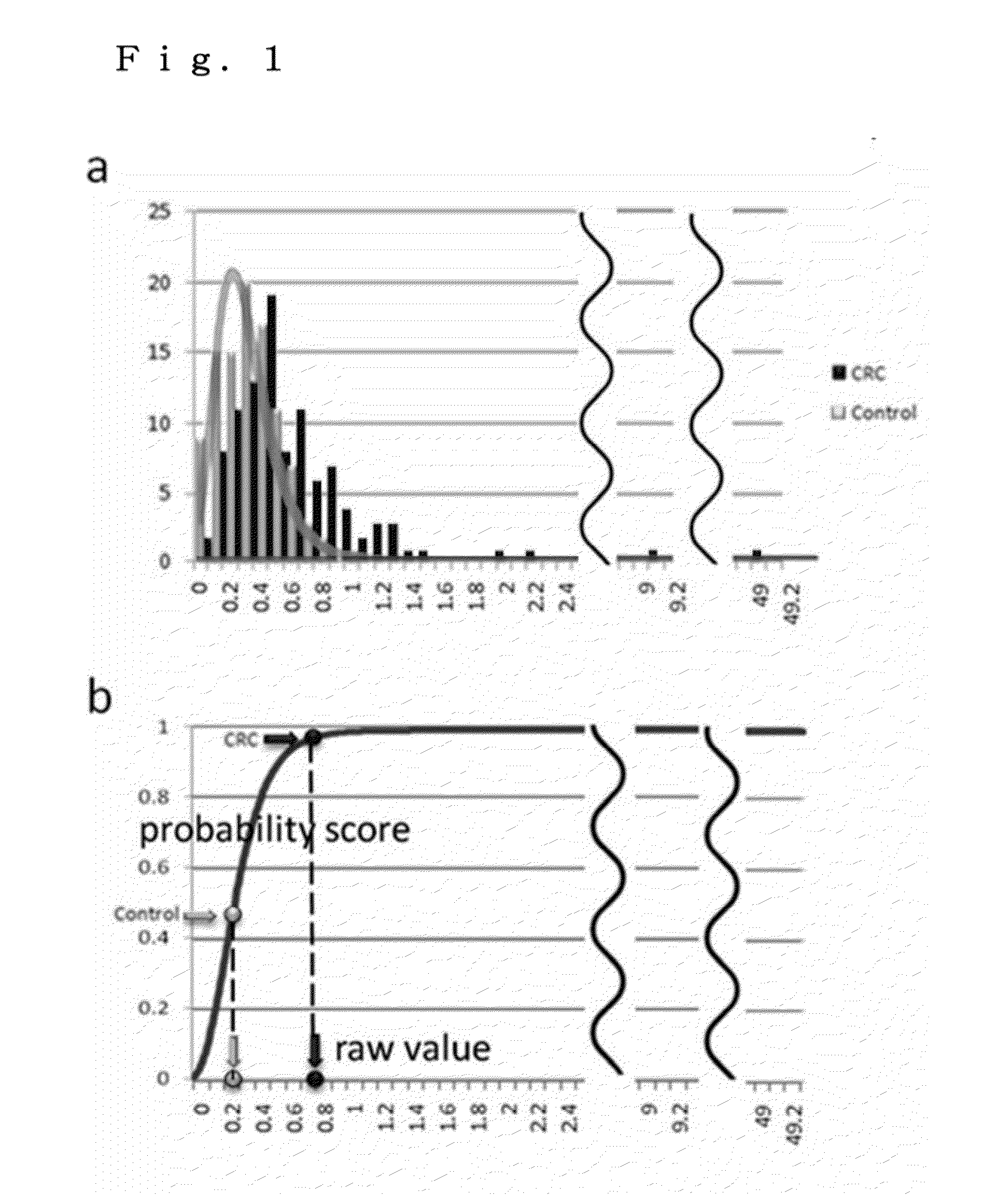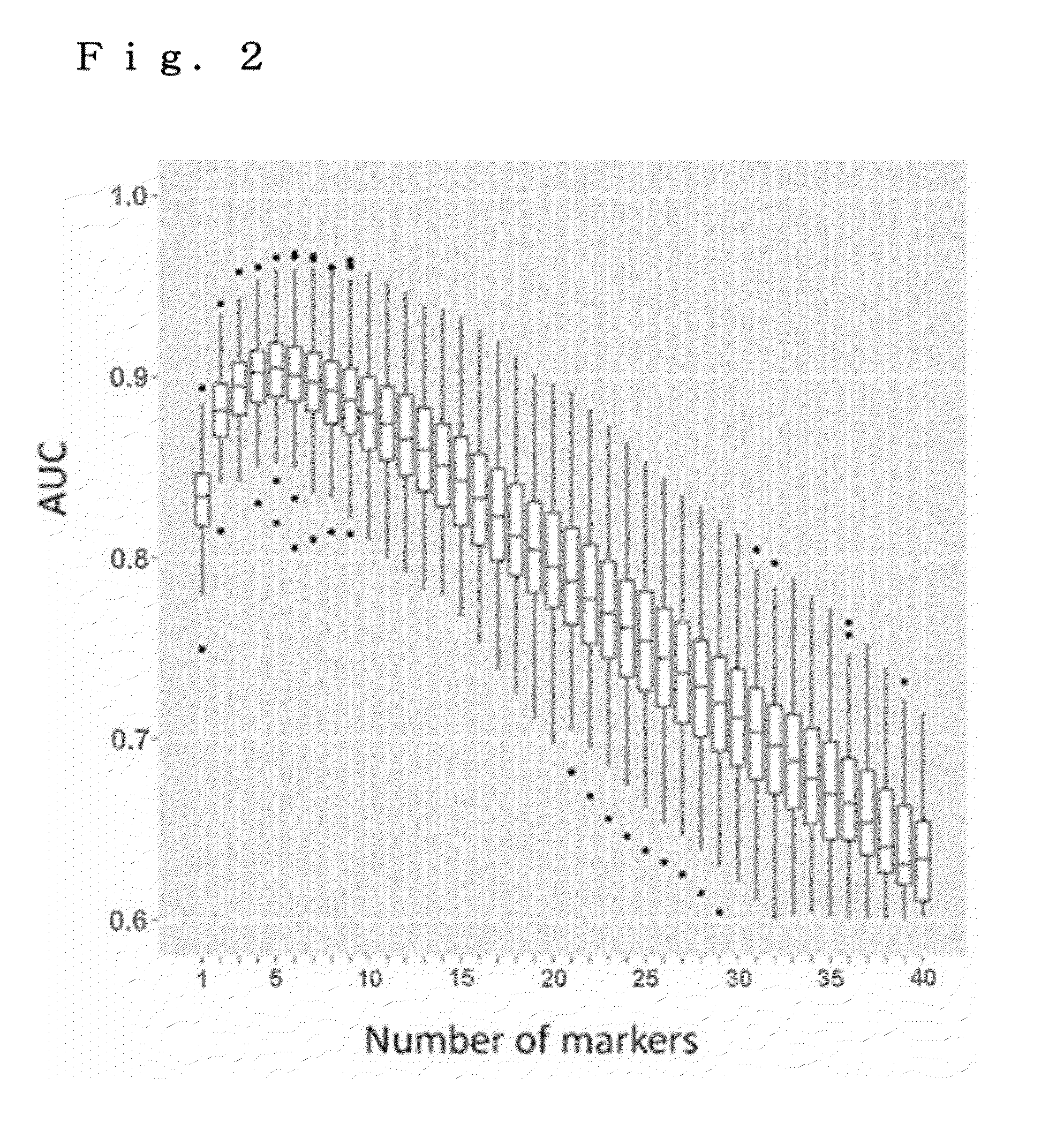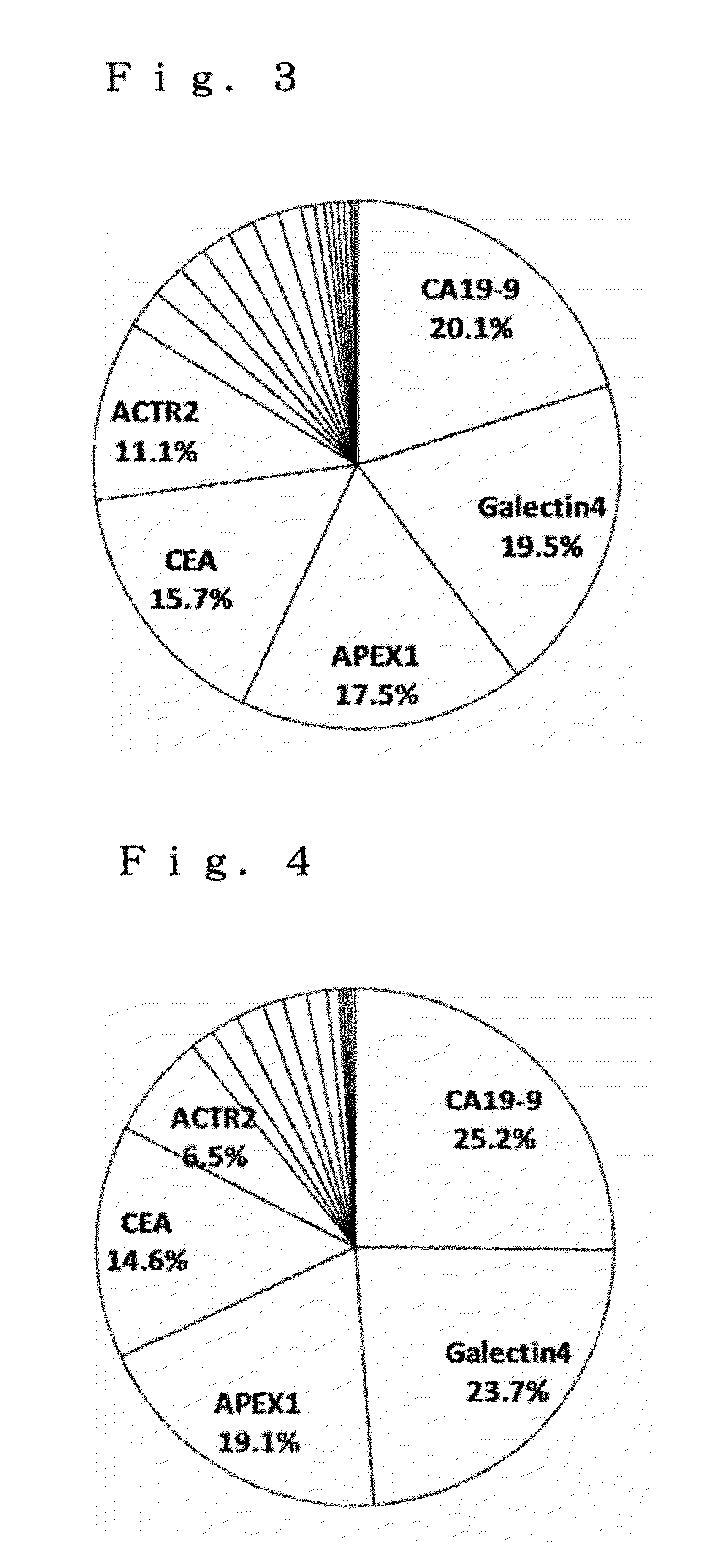Multiplex colon cancer marker panel
a colon cancer and marker panel technology, applied in the field of clinical diagnosis and screening of colon cancer, can solve the problems that each of the colon cancer markers that have been previously reported cannot achieve a satisfactory and achieve the effects of improving the reliability of diagnosis, minimizing the reduction of specificity, and improving the detection rate of cancer patients
- Summary
- Abstract
- Description
- Claims
- Application Information
AI Technical Summary
Benefits of technology
Problems solved by technology
Method used
Image
Examples
reference example 1
[0075]In the following Reference Example 2 and Example 1, plasma samples were prepared in the following manner. About 15 mL of blood was collected from each individual into a BD Vacutainer CPTTM tube. After the collection of blood, the collected blood was immediately centrifuged (1,700×g, 4° C., 20 min) to obtain a supernatant as a plasma component (about 5 mL). The obtained plasma sample was stored at −80° C.
[0076]The plasma sample was thawed before measurement and diluted 5,000 to 20,000-fold to obtain a blood sample used to measure the concentrations of the colon cancer markers according to the present invention.
reference example 2
[0077]Out of the proteins identified by proteomic analysis using cancer tissues in JP2008-14937A, 40 proteins whose ELISA measurement systems have been established were selected as candidates for colon cancer markers. These 40 proteins are shown in Tables 1 to 8. In Tables 1 to 8, the protein names and gene names of the 40 proteins, existing ELISA kits, standard proteins, capture antibodies, detection antibodies, conjugated enzymes, secondary antibodies, and substrates are shown. It is to be noted that the protein names and the gene names in Tables are names registered in the UniProt database, “CA19-9” in Table 1 refers to carbohydrate antigen 19-9, recombinant proteins marked with 3) in Tables 2 and 3 were synthesized using “Transdirect insect cell” (manufactured by Shimadzu Corporation), and antibodies marked with 4) in Tables 2, 3 and 4 were prepared by immunizing synthetic peptides.
TABLE 1GeneNo.Protein NameNameELISA KitStandard proteinCapture antibody1CarcinoembryonicCEACAM5Acc...
reference example 3
[0082]The effectiveness of a combined use of colon cancer markers for increasing the detection rate of colon cancer patients was verified.
[0083]The levels of almost all the 13 markers selected in Reference Example 2 in the plasma samples of the healthy individuals were relatively low. On the other hand, the plasma samples of the colon cancer patients had relatively high marker levels, and some of them had very high marker levels (i.e., outliers). A histogram representing the concentration (marker level) of Galectin-4 in the plasma samples of the healthy individuals and a histogram representing the concentration of Galectin-4 in the plasma samples of the colon cancer patients are shown in FIG. 1(a) by way of example. In FIG. 1(a), the horizontal axis represents the marker level of Galectin-4 and the vertical axis represents the number of samples. As shown in FIG. 1(a), the marker levels of the healthy individual group are well fitted with an extreme-value distribution function (repre...
PUM
| Property | Measurement | Unit |
|---|---|---|
| threshold | aaaaa | aaaaa |
| threshold | aaaaa | aaaaa |
| mass spectrometry | aaaaa | aaaaa |
Abstract
Description
Claims
Application Information
 Login to View More
Login to View More - R&D
- Intellectual Property
- Life Sciences
- Materials
- Tech Scout
- Unparalleled Data Quality
- Higher Quality Content
- 60% Fewer Hallucinations
Browse by: Latest US Patents, China's latest patents, Technical Efficacy Thesaurus, Application Domain, Technology Topic, Popular Technical Reports.
© 2025 PatSnap. All rights reserved.Legal|Privacy policy|Modern Slavery Act Transparency Statement|Sitemap|About US| Contact US: help@patsnap.com



